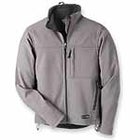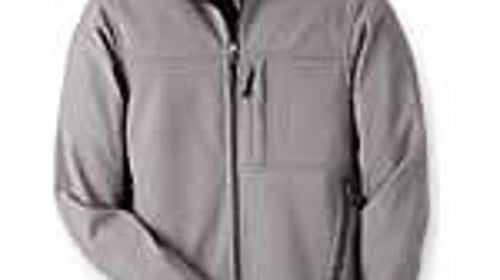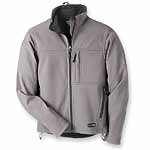I’ve said it before and I’ll say it again: I don’t think any product line out there causes quite as much confusion as the “soft-shell” category. Seeing as even the manufacturers can’t always agree on what they mean, I suppose that’s not surprising.
 One Jacket
One Jacket
I’ll give you my take, but first some theory. If you collected a pile of clothing with, say, a waterproof shell, a fleece jacket, and maybe a heavy insulating jacket such as a down parka, and then figured out what percentage of your outdoor time was spent wearing each one, you might find something like this: fleece jacket, worn 40 percent of the time; waterproof shell, 20 percent; fleece and shell, 30 percent; down jacket, 10 percent of the time. (I’m also assuming that you start with a light- or medium-weight base layer).
So you see, your clothing in some cases spends more time on the hanger or in a pack than on you. A soft shell is supposed to be more like a 60-percent playerin cool and damp weather, it replaces the fleece and shell by doing a pretty good job of keeping you warm and a pretty good job of keeping you dry. And it does so with less bulk than the fleece and better breathability than the waterproof shell.
A good example in this category: REI’s One Jacket ($198; www.rei.com). Made with Polartec Power Shield, it can be worn skiing, hiking, biking, even around townbasically, any time you want some protection from wind and light rain, need some insulation, but don’t want to overheat. It’s a very useful piece. The Arc’Teryx Gamma SV ($250; ww.arcteryx.com) is very similarsame material, though with slightly more technical cut and features, including hand-warmer pockets. I use a very similar jacket when bicycling in cold weatherI just throw it over a light T-shirt and I’m off. I have a One as well, and use that for hiking and hanging out around town.
What can get a little confusing is that some soft shells are really more of a light rain shell. That would include Cloudveil’s Prospector Jacket ($135; www.cloudveil.com). It’s meant to be worn like the One in some cases, but added to a fleece underlayer for more warmth in others.
Either way, I will say that none of these jackets is really a big-time insulating piece. Something like the One or Gamma would be fine for those cold days when you’re walking around town, popping in and out of stores, that sort of thing. But standing at a cold bus stop for 30 minutes or sitting in the stands at a football game on a cold November night? Probably not warm enough. For that, alas, you’re back to some of the old standbys like the fleece/shell combo or a serious insulator such as a down jacket.

